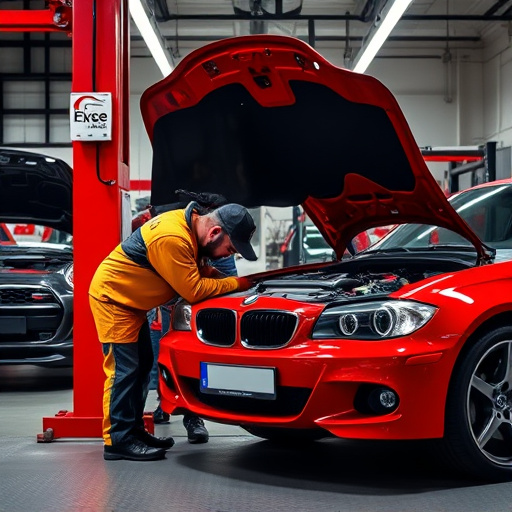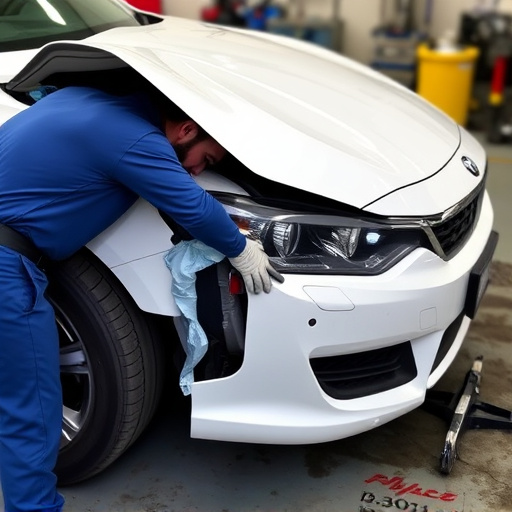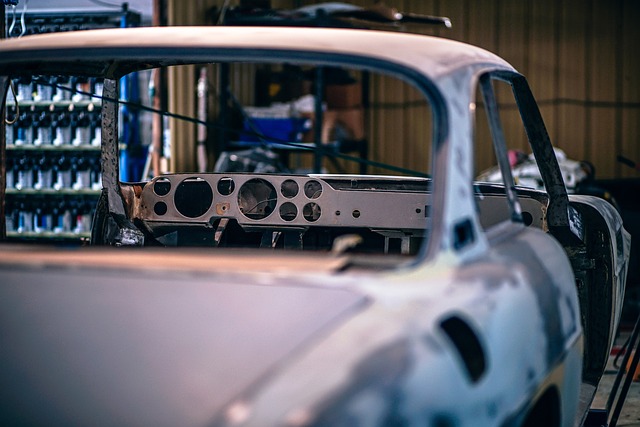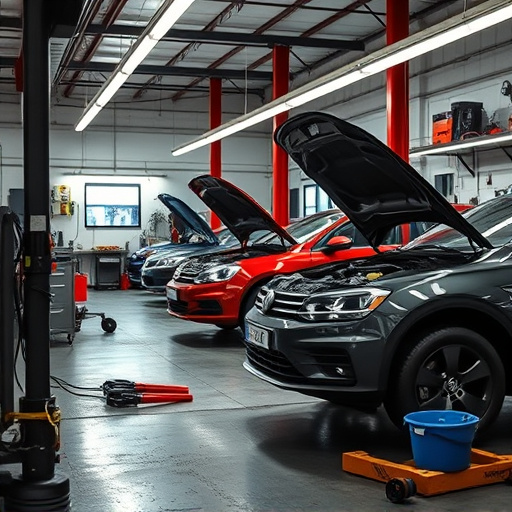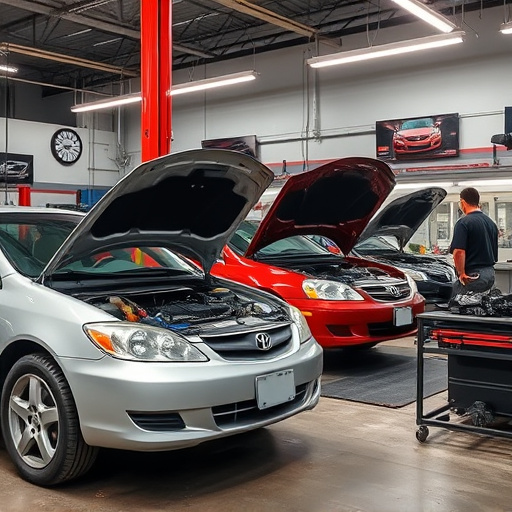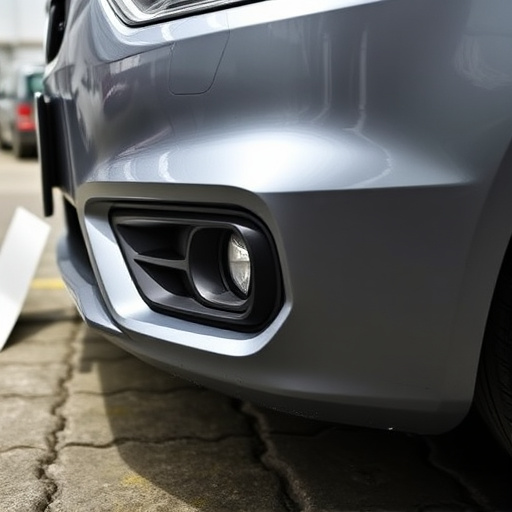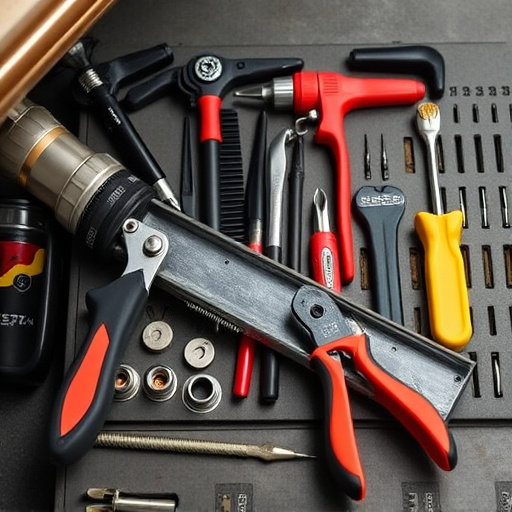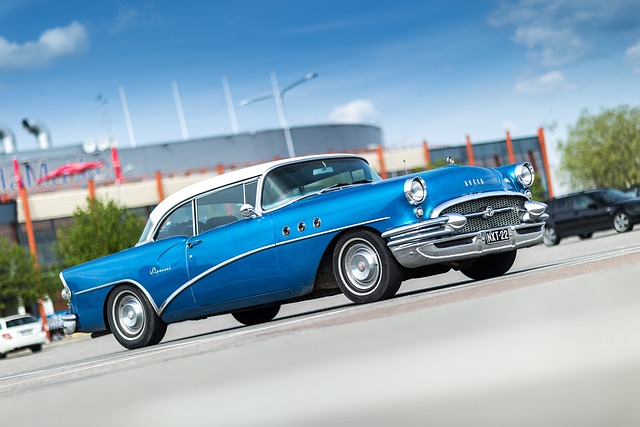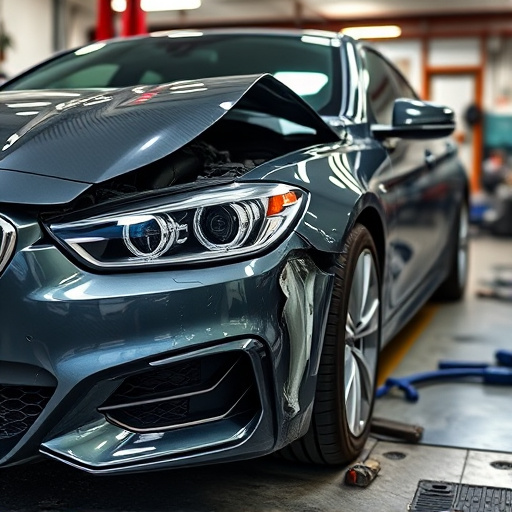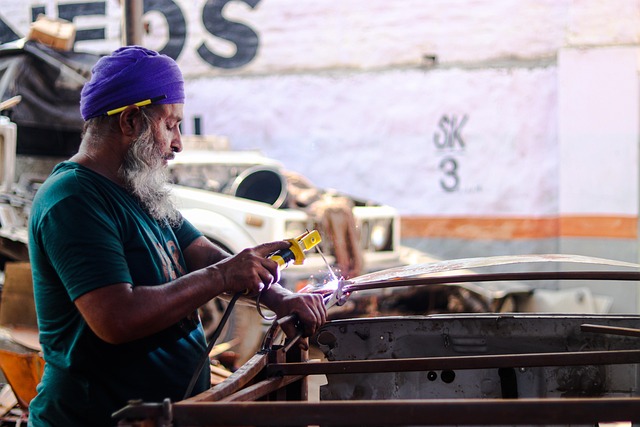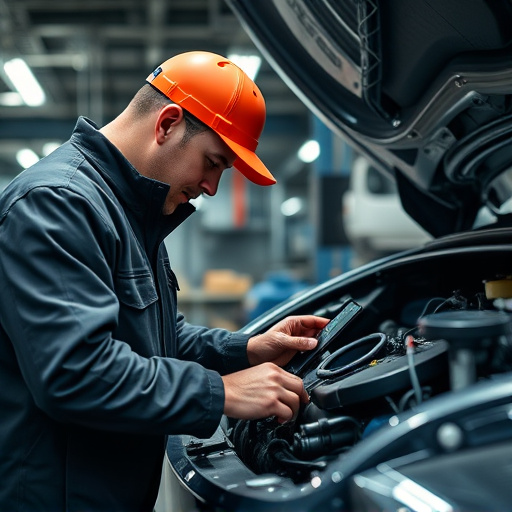Technician safety equipment is vital for automotive workshops and restoration facilities to mitigate risks during tasks like frame straightening and Mercedes-Benz repairs. This includes Personal Protective Equipment (PPE) like specialized gloves, eye protection, and respirators. Effective integration involves clear communication, defined roles, regular training, and accessible gear, enhancing operational efficiency in emergency response planning and minimizing risks across various automotive settings.
In today’s critical infrastructure landscape, ensuring the safety of technicians is paramount. Technician safety equipment plays a vital role in mitigating risks during emergency situations. This article delves into the essential components of understanding and integrating this equipment with comprehensive emergency response plans. We explore how the right gear, when seamlessly incorporated into protocols, enhances rapid and efficient responses. Additionally, we highlight the importance of training and drills to guarantee effective implementation, ultimately saving lives and assets.
- Understanding Technician Safety Equipment Needs
- Integrating Equipment into Emergency Response Protocols
- Training and Drills for Effective Implementation
Understanding Technician Safety Equipment Needs

Technician safety equipment is a vital component of any comprehensive emergency response plan for automotive workshops and restoration facilities. Understanding the specific needs of technicians involves recognizing the unique risks associated with various tasks, from frame straightening in car restoration to intricate Mercedes-Benz repairs. Personal Protective Equipment (PPE), such as specialized gloves, eye protection, and respirators, plays a crucial role in mitigating these risks.
Proper training on using technician safety equipment is essential. This includes learning how to don and doff PPE effectively, ensuring it fits well and is tailored to the specific tasks at hand. For instance, during frame straightening procedures, specialized gear ensures technicians are protected from metal shavings, debris, and potential accidents, while for Mercedes-Benz repair work, precise tools and high-quality materials safeguard both the technician and the intricate vehicle components.
Integrating Equipment into Emergency Response Protocols

In the realm of emergency response planning, integrating technician safety equipment is a strategic move that enhances overall operational efficiency. Technician safety equipment, including personal protective gear (PPE), specialized tools, and advanced diagnostic devices, plays a pivotal role in ensuring the well-being of personnel during critical incidents. When incorporated into existing protocols, this equipment doesn’t just protect technicians; it enables them to respond swiftly and effectively, minimizing risks and damage during emergency situations, whether in a car body shop, tire services, or automotive collision repair settings.
Effective integration involves clear communication channels, well-defined roles, and regular training sessions. Safety equipment should be readily accessible, and all staff must be proficient in using it. By seamlessly integrating these tools into their workflow, response teams can navigate through hazardous scenarios with confidence, ultimately reducing the impact of emergencies on operations and safeguarding lives.
Training and Drills for Effective Implementation

Effective implementation of technician safety equipment within emergency response plans heavily relies on comprehensive training and regular drills. These exercises serve as a crucial bridge between theory and practice, ensuring that every team member understands their role and responsibilities in various scenarios. Through hands-on simulations, technicians learn to swiftly access and utilize life-saving gear such as fire extinguishers, hazardous material suits, and first aid kits.
Regular training sessions also incorporate car collision repair and vehicle body shop-specific challenges, emphasizing the unique risks present in these environments. By integrating these exercises into standard operating procedures, technicians develop muscle memory for critical tasks during high-stress situations. This proactive approach not only enhances individual capabilities but also fosters a culture of safety awareness throughout the entire vehicle repair services operation.
Technician safety equipment plays a vital role in emergency response plans, ensuring swift and effective interventions. By understanding specific needs, integrating equipment seamlessly into protocols, and conducting regular training and drills, organizations can enhance the preparedness of their technicians. This proactive approach not only safeguards personnel but also facilitates efficient incident management, ultimately mitigating risks and optimizing outcomes.

